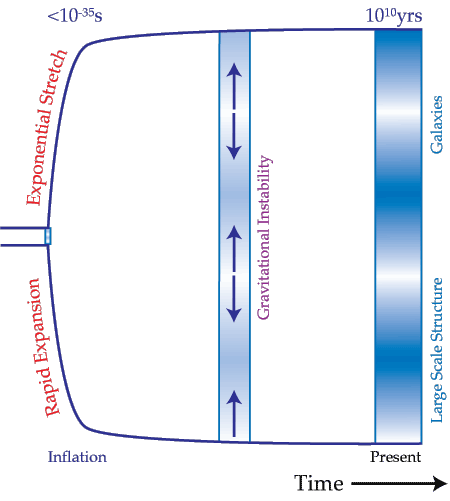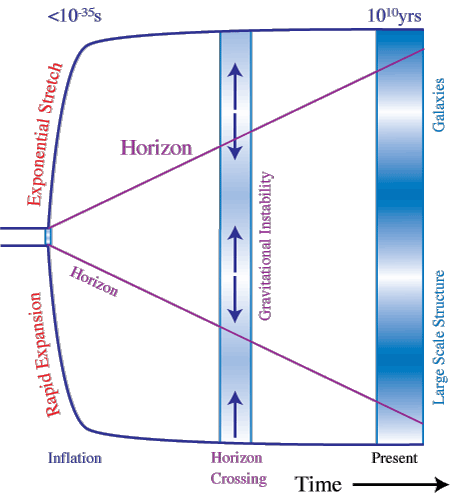
One question that remains unanswered is what is the origin of such large scale wrinkles in the first place. One theory is that a period of rapid expansion takes very small scale fluctuations at the level of the particle soup and stretches them to cosmic proportions.

Here the blue bands are snapshots of the wrinkles in the density of the universe at various times.
As time goes on, matter falls into these wrinkles and starts to build heavier and heavier objects.
The crucial period when this process of gravitational attraction and infall can occur is related to an important concept in cosmology called the horizon. Like the horizon on the earth, it is the point beyond which we're unable to look. Unlike the earth's horizon, this distance is increasing with time because light from more distant regions has had more time to reach us. Heuristically, if there is a large clump in the universe we only know to fall toward it once it comes into the horizon.

A useful property of the microwave background is that when we look out across widely separated angles, we're looking at wrinkles on such large scales that this process of infall hasn't yet begun. We're looking at the primordial wrinkles themselves.
